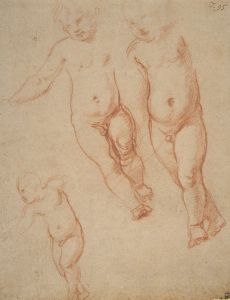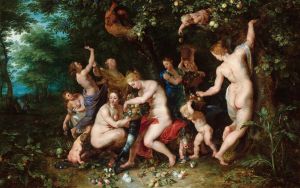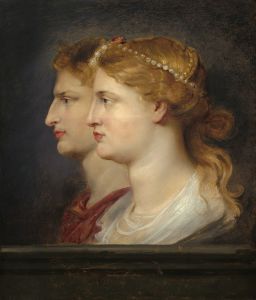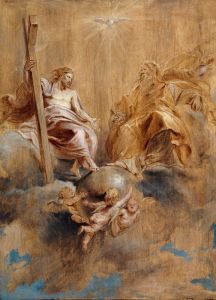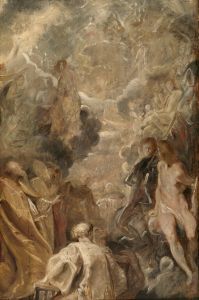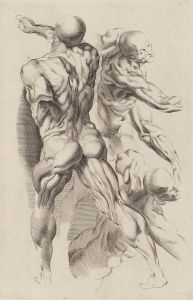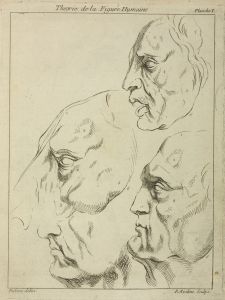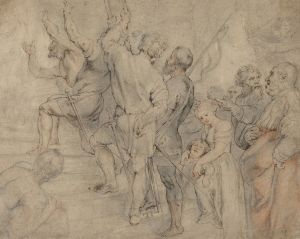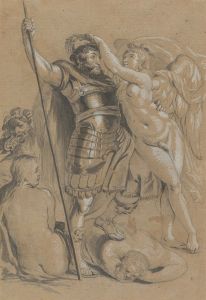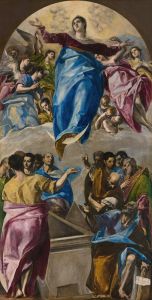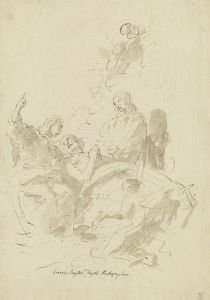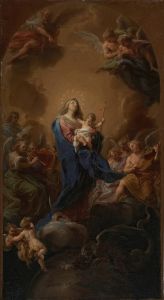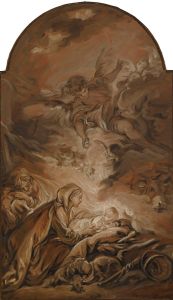
The Assumption of the Virgin
A hand-painted replica of Peter Paul Rubens’s masterpiece The Assumption of the Virgin, meticulously crafted by professional artists to capture the true essence of the original. Each piece is created with museum-quality canvas and rare mineral pigments, carefully painted by experienced artists with delicate brushstrokes and rich, layered colors to perfectly recreate the texture of the original artwork. Unlike machine-printed reproductions, this hand-painted version brings the painting to life, infused with the artist’s emotions and skill in every stroke. Whether for personal collection or home decoration, it instantly elevates the artistic atmosphere of any space.
Peter Paul Rubens' "The Assumption of the Virgin" is a notable example of Baroque art, showcasing the dynamic composition and vibrant color palette characteristic of Rubens' work. Painted between 1626 and 1627, this masterpiece was commissioned for the high altar of the Cathedral of Our Lady in Antwerp, Belgium, where it remains today. The painting is celebrated for its dramatic portrayal of the Virgin Mary's assumption into heaven, a theme that has been a significant subject in Christian art.
Rubens, a prolific Flemish artist, was renowned for his ability to convey movement and emotion through his paintings. In "The Assumption of the Virgin," he captures the moment when Mary is taken up into heaven, surrounded by a host of angels. The composition is marked by a strong upward movement, drawing the viewer's eye towards the heavens. This is achieved through the use of diagonal lines and the positioning of figures, which create a sense of ascension and divine intervention.
The central figure of the Virgin Mary is depicted with grace and serenity, her hands clasped in prayer as she is lifted by cherubs. Her robes are painted in rich hues of blue and red, colors traditionally associated with Mary, symbolizing her purity and divine love. The surrounding angels are portrayed with a sense of joyous celebration, their expressions and gestures enhancing the overall feeling of exaltation.
Rubens' use of light and shadow adds depth and drama to the scene. The Virgin is bathed in a celestial light, emphasizing her holiness and the miraculous nature of the event. The contrast between the illuminated figures and the darker background serves to highlight the divine presence and the separation between the earthly realm and the heavenly sphere.
The painting also reflects Rubens' mastery of anatomy and his ability to depict the human form with realism and vitality. The figures are rendered with a sense of weight and volume, their poses dynamic yet balanced. This attention to detail and the lifelike quality of the figures contribute to the painting's emotional impact.
"The Assumption of the Virgin" is not only a religious work but also a testament to Rubens' skill as an artist and his ability to convey complex theological themes through visual art. The painting remains an important cultural and religious artifact, attracting visitors and art enthusiasts from around the world.
Rubens' influence on Baroque art is significant, and his works, including "The Assumption of the Virgin," continue to be studied for their innovative use of composition, color, and light. This painting exemplifies the grandeur and emotional intensity that define the Baroque period, making it a quintessential representation of the era's artistic achievements.





